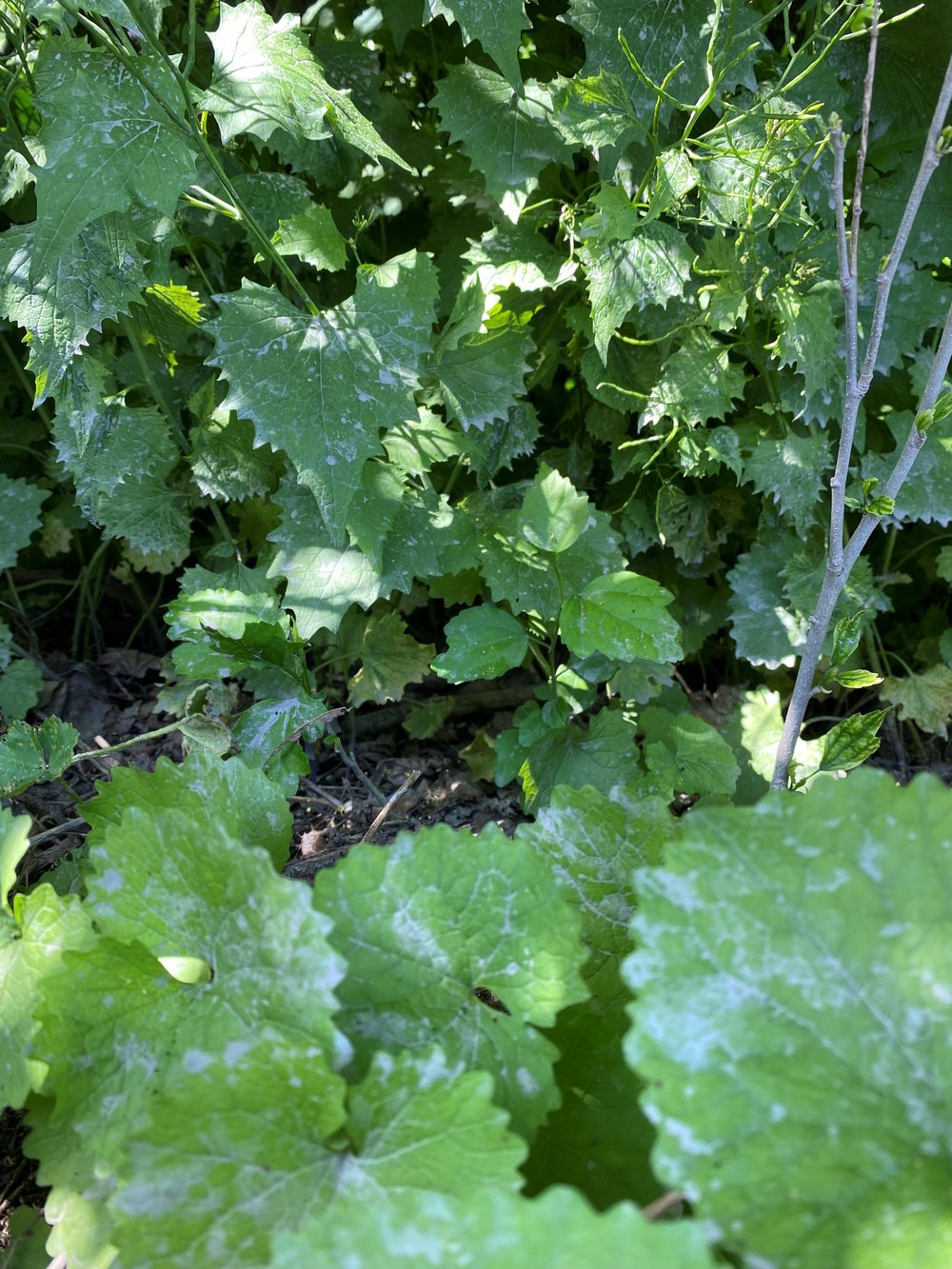Posted: May 30, 2022
Consider options for turning invasive plant species into food - a means of control and tasty too!

Garlic mustard is a biennial plant, with first year growth in the foreground and second year growth in the background, about to bear seeds. Photo by Allyson Muth
Getting a handle on invasive plants can be a real challenge for many forest landowners. They are everywhere! Most recent data from the US Forest Service says that invasives are present in over 60% of the forested plots they sample in Pennsylvania, with the southern part of the state having much greater numbers and diversity of non-native competitive plant species.
For landowners and homeowners alike, these plants may become challenging to creating and maintaining the natural habitats that support the values held for the land. Means of control range from chemical (e.g., treating with herbicides) to mechanical (e.g., repeatedly hacking them down or pulling them up, preferably before seed set) to cultural (e.g., goats trained to eat non-native plants), and there are pros and cons and varying levels of efficiency and resources to support each. But have you considered making them part of your diet?
Wild foraging is about looking to nature to provide food, outside of gardens and cultivated spaces – think picking black raspberries off the side of a trail or seeking out edible mushrooms in forested areas. A simple Internet search will reveal several options for wild foraging for invasive plants. Not all are edible. Many contain compounds that deter herbivory – causing stomach upset or worse, so stick with the known.
A small sampling:
- Garlic mustard has been touted for its use in soups, pesto, and curries. The best time to eat it is in early May before it flowers. Because it is so prolific, it’s best to pull the whole root out, but use only the leaves for food.
- Autumn olive berries are similar to tart red currants, though with larger seeds.
- Dandelion has been shown to be an incredibly nutritious plant with the whole plant edible, either raw or cooked. The yellow flowers are edible; leaves get more bitter as the season progresses; roots are boiled to complement dishes. The only part that may be a little less tasty are the seeds with their fluff to carry them aloft.
The key to wild foraging is to be 100% sure of proper identification. Get a good guide and be aware of lookalikes. Make sure your foraging happens safely and legally. Don’t harvest in locations where pesticides may be in use to control the plants. Also make sure that you have permission to harvest plants; for example, public land foraging often requires a permit.
While wild foraging is not an adequate means of control for many plants outcompeting our native species, there is something satisfying about turning these competitive plants into food…
James C. Finley Center for Private Forests
Address
416 Forest Resources BuildingUniversity Park, PA 16802
- Email PrivateForests@psu.edu
- Office 814-863-0401
- Fax 814-865-6275
James C. Finley Center for Private Forests
Address
416 Forest Resources BuildingUniversity Park, PA 16802
- Email PrivateForests@psu.edu
- Office 814-863-0401
- Fax 814-865-6275

